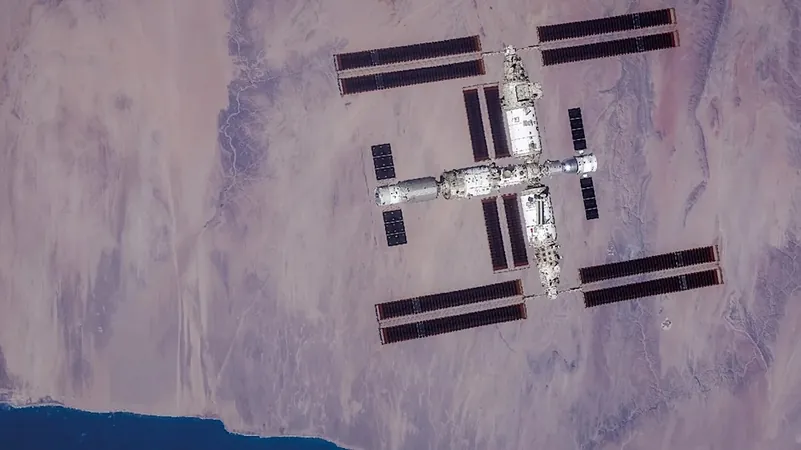
Meet Niallia tiangongensis: A New Microbe from the China Space Station!
2025-04-15
Author: Li
A Breakthrough Discovery in Space Microbiology!
Exploring the cosmos isn't just about astronauts and spacecraft; it's also about the tiny organisms that hitch a ride with us! Researchers have just unveiled a fascinating new bacterial strain isolated from the China Space Station, shedding light on how microbes thrive in the harsh conditions of space.
Introducing Niallia tiangongensis sp. nov.
Dubbed Niallia tiangongensis, this remarkable Gram-positive, aerobic, spore-forming bacterium was recovered from the surfaces of space hardware, demonstrating the resilience and adaptability of life—even among the stars!
A Closer Look at This Unique Microbe
What sets Niallia tiangongensis apart? With a genome size of 5,166,230 base pairs and a G+C content of 35.6 mol%, it bears a striking resemblance to its closest relative, Niallia circulans, yet clearly qualifies as a new species based on genetic data. Its unique cellular makeup includes significant amounts of anteiso-C15:0 and iso-C15:0 fatty acids, along with menaquinone-7 (MK-7) as its primary quinone.
Survival Skills for the Stars!
One of the most intriguing findings is Niallia tiangongensis's ability to hydrolyze gelatin, indicating its potential to thrive on limited nutrients—a crucial survival skill in space. Genomic analysis highlights specific adaptations that enhance its capability to form biofilms, deal with oxidative stress, and repair radiation damage, making it a true survivor in extreme environments.
The Future of Space Microbiology
As we continue to explore the universe, understanding microbes like Niallia tiangongensis is vital. Not only do they offer insights into life’s resilience, but they also play a crucial role in ensuring the health of astronauts during long missions and maintaining spacecraft functionality.
A New Chapter in Astrobiology!
This discovery, published in the International Journal of Systematic and Evolutionary Microbiology, represents a significant advance in our understanding of microbial life beyond Earth. Who knows what other surprises await us in the vast expanse of space?


 Brasil (PT)
Brasil (PT)
 Canada (EN)
Canada (EN)
 Chile (ES)
Chile (ES)
 Česko (CS)
Česko (CS)
 대한민국 (KO)
대한민국 (KO)
 España (ES)
España (ES)
 France (FR)
France (FR)
 Hong Kong (EN)
Hong Kong (EN)
 Italia (IT)
Italia (IT)
 日本 (JA)
日本 (JA)
 Magyarország (HU)
Magyarország (HU)
 Norge (NO)
Norge (NO)
 Polska (PL)
Polska (PL)
 Schweiz (DE)
Schweiz (DE)
 Singapore (EN)
Singapore (EN)
 Sverige (SV)
Sverige (SV)
 Suomi (FI)
Suomi (FI)
 Türkiye (TR)
Türkiye (TR)
 الإمارات العربية المتحدة (AR)
الإمارات العربية المتحدة (AR)